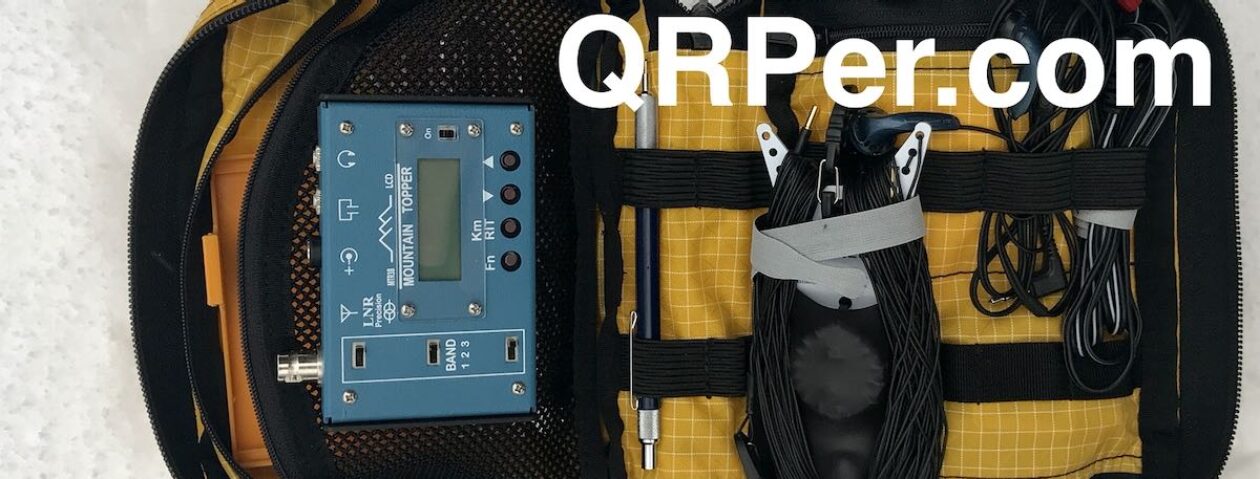San Francisco Radio Diary – Part 2
by Leo (DL2COM)
I can’t remember if I have ever walked through a eucalyptus forest before but I am pretty sure I have not as I would have instantly remembered the intense and pleasant smell.

The morning sunlight and a few scattered low clouds created a rather mystical atmosphere as I was hiking up a narrow and slippery trail on the north-east side of Mt. Davidson in Central San Francisco (W6/NC-423).

My research regarding the trail system of this compact urban mountain was barely existent so I did not end up using the south entrance (Landsdale Ave. & Dalewood Way) which would have taken me to the summit in only a few minutes on a dry and tidy path – but then sans the nice forest panorama. Not worth the tradeoff I’d say.

Due to its proximity to the city center, Mt. Davidson is as easily accessible as pretty much anything in SF for visitors who don’t want to travel further than say a 30 min bus/Uber ride or so. Activators will be rewarded with stunning views of the bay area and the city’s skyline as well as a majestic cross, apparently a well-known SF landmark.

I had contacted Elliott (K6EL) prior to my trip to the U.S. who according to the SOTA database has been on Mt. Davidson many times (and on many other summits as I only learned later). This morning I got up early, texted him and was very happy that he agreed to join me spontaneously for my first U.S. activation. Elliott arrived only a few minutes after me as I was struggling to tie a rope to a stone slightly squinting from jetlag. Neither did I bring a throw weight nor a mast due to cabin luggage restrictions. I now know why I cherish these things so much but Elliott assured me that we’d get that wire up eventually and we started to chat.
It turned out that Elliott has done a lot of work for the SOTA and ham radio community. For example, as part of the SOTA management team and being a super active activator (only scratching the surface here): e.g. no.4 Honor Roll Summit-2-Summit (S2S) world-wide pushing almost 10k S2S QSOs. Wait what? That’s a hell of a lot of mountain-top radio experience, so his reassuring words instilled a high degree of confidence for my improvised antenna setup. Not only did we manage to get the 31’ random wire up in a high tree but he also brought a 2m HT which I had (I admit) forgotten in Germany.
While I was still busy setting up the station he had already bagged a handful of FM S2S QSOs. That’s how it’s done.

Suddenly two police officers showed up on motorcycles and I started gathering a number of arguments in my head as to why our activation is a completely legitimate thing (strange reflex or comprehensible?). They approached us in a very kind way and after we greeted each other Elliott pointed to our wire antenna and let them know that “We are ham radio operators and this will be our antenna for the next hour.” Full stop. Ha.
In fact the two officers didn’t need any arguments from us, instead they showed genuine technical interest and at some point we were all joking around together. I believe they were just happy to find everything in good order and maybe also catch a few warming sun rays. Still I loved the way Elliott presented our activity as the most natural and non-optional thing. I guess I just didn’t know how local police would react at first. A good reminder that mutual respect goes a long way.
By now the fog had cleared and blue skies showed all around. I was itching to get on the air! To break the ice I logged a quick S2S contact with WD4CFN on Max Patch, a mountain on the NC/Tennessee border. Off to a great start! Elliott suggested starting on 10m so that’s what I did.

CQ SOTA DE W6/DL2COM K…uff I needed a few attempts to get that W6/ prefix into a somewhat natural CW flow but then first contacts started rolling in.
F4WBN, Chris, with a strong signal from France. So cool to hear him on the other side of the planet as well. He was shortly followed by LW2DO from Argentina and then a bunch of US operators including four more S2S QSOs before S57S (Slovenia) and JG0AWE (Japan) topped off the log with a warm DX rain. WOW!

I could have called CQ forever but decided to call it a day after 27 QSOs and rather enjoy the sun, view and good company. After all, I also needed to get back to the city in time.

Elliott kindly offered to give me a ride so we had some time to discuss – how could we not – the KH1, current DXpeditions, and various topics around SOTA, U.S. ham radio and the city of San Francisco.
I am thankful for this perfect SOTA morning.
Gear used:
- Elecraft KX2 incl. internal ATU, battery & charging module
- QRPGuys 40-10m UnUnTenna
- About 50′ of 1,7mm throw line (too thin, get at least 2mm)
- Palm Radio Mini Paddle
- Goruck GR-1 backpack (26L)
vy 73 de Leo W6/DL2COM





















































